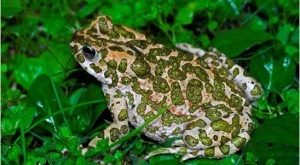Name: Christ’s thorn jujube
Scientific name: Ziziphus spina-christi
Family: Rhamnaceae
Description
It is an evergreen tree with whitish bark or light brown color. This tree has characteristically rich foliage with its width reaching 4m in a round shape and its height reaching about 14m. The leaves of the Christ’s thorn jujube are simply alternate, slightly hairy on the lower surface, while their upper surface is smooth. Its flowers have petals that have an intense yellowish color. It blooms from May to August. Also, its fruit has a spherical shape and has a yellowish to brownish-red color. The taste of the fruit has a sub-sweet or sour feeling and ripens from September to December.
Designation
The name ” Christ’s thorn jujube” comes from the belief in the old days that the thorn that Christ had on his head was made from the leaves of this particular tree which is thorny.
Rarity
In Cyprus, the Christ’s thorn jujube is a rare endemic plant species, i.e. a plant that has been introduced by humans and consequently acclimatized in a specific area with the result that it survives over many years.
Habitat
This tree is found in plantations in the plains, such as the Monastery of the Apostle Barnabas in Limassol and in other areas with an altitude of up to 200m and grows in deep and dry soils.
Uses
In ancient times, the fruit of the Christ’s thorn jujube was used in medicine, as it had healing properties in people suffering from severe cough [4,6].
Christ’s thorn jujube square
Many people used Christ’s thorn jujube Square as a landmark in the old castle square in Limassol. The Christ’s thorn jujube net has been planted on the east side of the medieval castle since 1800 and this tree was framed by the “Kounapia cafe” (“kounapia” is the Greek name of Christ’s thorn jujube) and the ” Kounapia inn”, which was a night place for producers coming from other areas to promote the products. The appearance of this busy square changed radically in 1934, where the Christ’s thorn jujube net was cut to be replaced by the current Second Municipal Market. Nevertheless, due to the fact that Christ’s thorn jujube Square was a well- known place in the area, it has kept its name with this characteristic name for several years.
Protection
The replacement of this particular tree awakens the need for environmental and ecological consciousness to protect the flora of our place. While in the old days everyone appreciated its value and usefulness, the change was rapid with the cut to replace it with buildings for the purpose of selling and buying agricultural products.
Sources:
[1] http://www.foni-lemesos.com/topika/afieroma/3993-sykaminia-kai-plateia-koynnapias.html
[2] Τσιντίδης, Τ., Χατζηκυριάκου, Γ & Χριστοδούλου, Χ. (2002) Δέντρα και Θάμνοι στην Κύπρο. Λευκωσία: Ίδρυμα Α.Γ. Λεβέντη – Φιλοδασικός Σύνδεσμος Κύπρου
[3] http://content.yudu.com/Library/A1vqtn/FONILEMESOS57/resources/content/6.swf
[4] http://www.ethnobiomed.com/content/1/1/8
[5] http://limassolinhistory.blogspot.com/2014/09/blog-post_88.html
[6] http://en.wikipedia.org/wiki/Ziziphus_spina-christi
Picture source:
http://commons.wikimedia.org/wiki/Ziziphus_spina-christi#mediaviewer/File:Ziziphus_spina-Christi.jpg
 Κυπριακό Κέντρο Περιβαλλοντικής Έρευνας & Εκπαίδευσης – Κυκπεε
Κυπριακό Κέντρο Περιβαλλοντικής Έρευνας & Εκπαίδευσης – Κυκπεε




